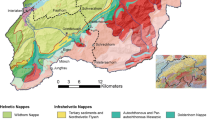Abstract
The bottom morphology and thickness of bottom sediments of Zapovednoye and Peyungda lakes, which were located on the territory of the Tunguska State Nature Reserve, were studied by echo-sounding and seismic reflection profiling. The lakes are situated at a distance of 50 and 60 km, respectively, from the supposed epicenter of the blast of the Tunguska Event—a massive explosion of unknown nature that occurred in 1908. It is revealed that both lakes have a circular shape and funnel-like morphology with depths of 60 and 34 m, respectively. They are similar in shape and size to Cheko Lake, which, according to some researchers, is a trace of the fall of a celestial body as a result of the Tunguska Event. Previously, the unusual shape of Cheko Lake was assumed to be unique to the area. This fact was one of the main arguments in favor of its impact origin. With the example of Zapovednoye and Peyungda lakes, we showed that the shape of Cheko Lake is not unique to this area; the age of the bottom sediments of Zapovednoye and Peyungda lakes exceeds several thousand years. The similarity of the shape of these three lakes and their location in river channels indicate their common origin and testify against the hypothesis about the impact origin of Cheko Lake as a result of the Tunguska Event of 1908.




Similar content being viewed by others
REFERENCES
N. V. Vasil’ev, in Tunguska State Reserve (Tomsk State Univ., Tomsk, 2003), Issue 1 [in Russian].
O. G. Gladysheva, Tunguska Accident: Puzzle Details (Nauka, St. Petersburg, 2011) [in Russian].
L. Gasperini, F. Alvisi, G. Biasini, E. Bonatti, G. Longo, M. Pipan, M. Ravaioli, and R. Serra, Terra Nova 19, 245–251 (2007).
L. Gasperini, E. Bonatti, and G. Longo, Terra Nova 20, 169–172 (2008).
L. Gasperini, E. Bonatti, S. Albertazzi, L. Forlani, C. A. Accorsi, G. Longo, M. Ravaioli, F. Alvisi, A. Polonia, and F. Sacchetti, Terra Nova 21, 489–494 (2009).
D. Yu. Rogozin, A. V. Dar’in, I. A. Kalugin, M. S. Mel’gunov, A. V. Meidus, and A. G. Degermendzhi, Dokl. Earth Sci. 476 (2), 1226–1229 (2017).
D. Yu. Rogozin, G. N. Bolobanshchikova, L. A. Burdin, and A. V. Meidus, Sib. Ekol. Zh., No. 4, 404–414 (2022).
P. S. Krylov, D. K. Nourgaliev, and P. G. Yasonov, ARPN J. Eng. Appl. Sci. 10, 744–746 (2015).
A. V. Darin, D. Yu. Rogozin, A. V. Meydus, V. V. Babich, I. A. Kalugin, T. I. Markovich, Ya. V. Rakshun, F. A. Darin, D. S. Sorokoletov, A. A. Gogin, R. A. Senin, and A. G. Degermendzhi, Dokl. Earth Sci. 492 (2), 442–446 (2020).
ACKNOWLEDGMENTS
The authors are grateful to the staff of the Tunguska Nature Reserve for their help in this study.
Funding
This study was supported by the Russian Science Foundation, grant no. 22-17-00185, https://rscf.ru/project/22-17-00185/.
Author information
Authors and Affiliations
Corresponding author
Ethics declarations
The authors declare that they have no conflicts of interest.
Additional information
Translated by V. Krutikova
Rights and permissions
About this article
Cite this article
Rogozin, D.Y., Krylov, P.S., Dautov, A.N. et al. Morphology of Lakes of the Central Tunguska Plateau (Krasnoyarsk Krai, Evenkiya): New Data on the Problem of the Tunguska Event of 1908. Dokl. Earth Sc. 510, 307–311 (2023). https://doi.org/10.1134/S1028334X23600044
Received:
Revised:
Accepted:
Published:
Issue Date:
DOI: https://doi.org/10.1134/S1028334X23600044




